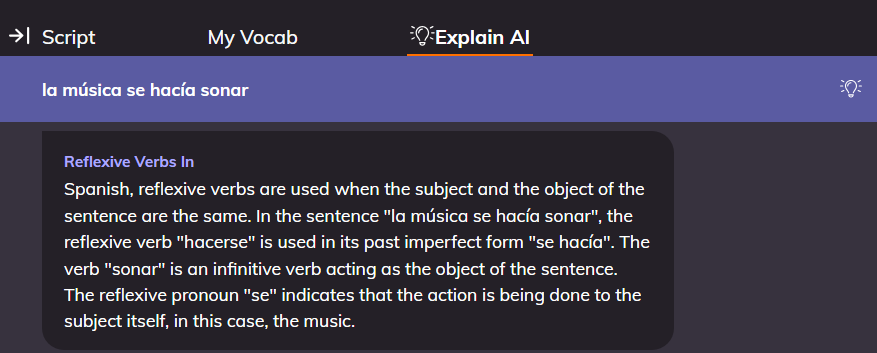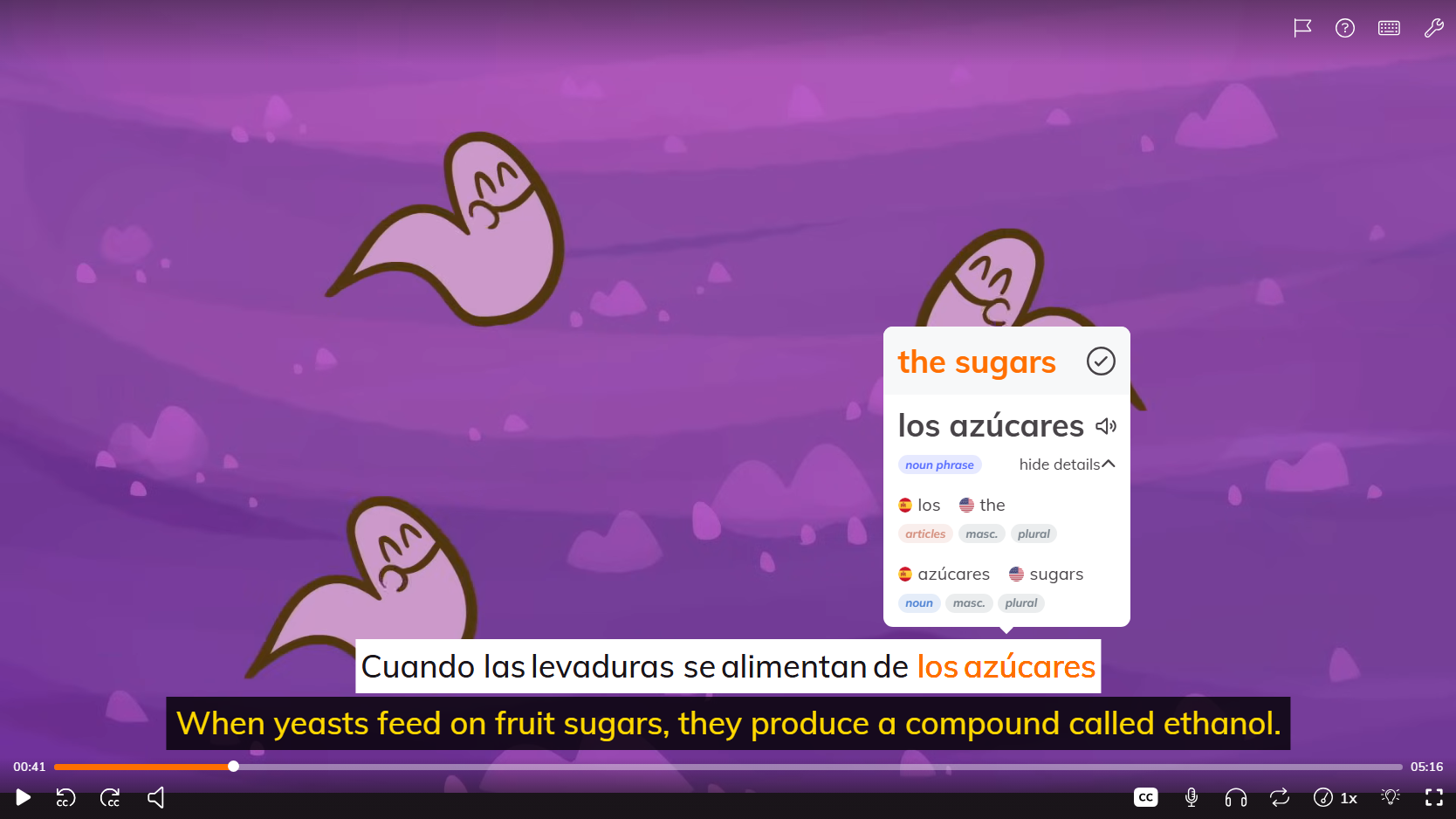Most people think long words equal difficult languages. They're wrong!
When you see a word like Japanese ikenakatta (couldn't go, your brain may probably scream "complicated!" right away. But the truth is that these agglutinative language patterns are just stacking simple, predictable pieces together.
Once you know that ike- comes from "iku" (to go), -nai means "not," and -katta makes it past tense, you can decode the whole word. Compare this to fusional languages like Russian, where a single word ending changes based on gender, case, and number in ways you just have to memorize. The agglutinative meaning is right there in the word - you just need to learn how to spot the building blocks.
In this guide, I’ll explain exactly how agglutinative language works, ikts examples, and why it's much easier to learn than you think.
- What Is The Best Way To Learn Greek? Guide + Tips
- English or Spanish: 11 Surprising Differences
- Why Memorizing Spanish Words Won’t Make You Fluent

What Is Agglutination?
Based on the Latin agglutinare, meaning "to glue together," Agglutination is a morphological process where languages build complex words by stacking meaningful pieces onto a root word. Each piece (called a morpheme) has one specific job, like marking plural, past tense, or possession.
Here's how this looks in real languages:
Turkish is the textbook example. Take the word kitap (book):
- kitap-lar (books) - add -lar for plural
- kitap-lar-ımız (our books) - add -ımız for "our"
- kitap-lar-ımız-dan (from our books) - add -dan for "from"
Each suffix has one clear job and attaches in a fixed order. You can't mix them up—it's always root + plural + possession + direction. This predictability makes Turkish words long but logical.
Korean works the same way with verbs. From ga (go):
- ka-la = "Go!" (command marker -la)
- ka-ca = "Let's go!" (suggestion marker -ca)
- ka-pni-ta = "He is going" (politeness -pni + statement -ta)
Korean can stack up to seven different suffixes on one verb, each adding specific information about tense, politeness, or mood.
Hungarian follows similar rules with nouns. Start with kert (garden):
- kert-ek (gardens) - plural marker
- kert-em-ben (in my garden) - possession + location
- kert-je-ink-ből (from our gardens) - his/her + our + direction
Each Hungarian suffix has its designated spot in the word. Once you know the order, you can build or decode any word.
Characteristics Of Agglutinative Languages
Many languages use agglutinination to some degree, but highly agglutinative languages share specific traits that make them stand out. These characteristics create a predictable one-to-one correspondence between form and meaning
- You can easily see where one morpheme ends and another begins
- Minimal irregular verbs or exceptions to learn
- Morphemes attach in specific "slots" around the root word
- Stacking morphemes creates words that can express entire phrases
- Use prefixes and suffixes rather than word order to show meaning
- Vowels in suffixes often match the vowels in the root word
Examples Of Agglutinative Languages
Japanese
Japanese is an agglutinative language, adding information such as negation, passive voice, past tense, honorific degree, and causality in the verb form. Japanese has only two verbs considered fully irregular, and only about a dozen others with minor irregularity, making it remarkably predictable once you understand the system.
Just note that the agglutinative nature of Japanese verb conjugation can make the final form quite long.
| Root | Suffixes Added | Result | Meaning |
|---|---|---|---|
| iku (行く) | -mashita | ikimashita (行きました) | went (polite) |
| iku (行く) | -nai + -katta | ikenakatta (行けなかった) | couldn't go |
| taberu (食べる) | -tai | tabetai (食べたい) | want to eat |
| taberu (食べる) | -tai + -kunai | tabetakunai (食べたくない) | don't want to eat |
| taberu (食べる) | -sase + -rare + -ta | tabesaserareta (食べさせられた) | was forced to eat |
| hanasu (話す) | -taku + -nakatta | hanashitakunakatta (話したくなかった) | didn't want to talk |
What other languages express with helping verbs and additional words, Japanese expresses with suffixes added to the word root. The conjugational morphemes are appended after one another in head-final order, creating a reverse pattern from English. While some fusion of morphemes does take place, this is rare, maintaining the clear boundaries that make agglutinative languages work.
Korean
Korean is classified as an agglutinative language, which makes its grammar highly systematic. Technically, a finite Korean verb has seven slots for different grammatical suffixes that attach in a fixed order. The seven slots follow this order:
- honorific -(u)si
- tense -(e)ss
- experiential aspect -(e)ss
- modal -keyss
- formal -(u)pni
- retrospective -te
- mood -ta/-kka/-la/-ca/-yo.
| Root | Suffixes Applied | Result | Meaning |
|---|---|---|---|
| ga- (가-) | -ss (past) + -yo (polite) | gasseoyo (갔어요) | went (polite) |
| boda (보다) | -go sip + -eoyo | bogo sipeoyo (보고 싶어요) | want to see |
| meok- (먹-) | -ji mot + -haeyo | meokji mothaeyo (먹지 못해요) | can't eat |
| hagsaeng (학생) | sin- (new) + -ibsaeng | sinibsaeng (신입생) | new student |
| sinibsaeng (신입생) | -i + -si + -n + -gayo | sinibsaengisigayo (신입생이신가요) | Are you a new student? (honorific) |
Unlike many agglutinative languages, Korean places heavy emphasis on social relationships through its morphology, requiring speakers to encode their social position relative to both their listener and the subject of their sentence within the verb itself.
Turkish
Turkish is a highly agglutinative language, in that much of the grammar is expressed by means of suffixes added to nouns and verbs. It is very regular compared with many European languages.
Another characteristic of Turkish is vowel harmony. Most suffixes have two or four different forms, the choice between which depends on the vowel of the word's root or the preceding suffix. This phonological adaptation makes Turkish distinctly different from Japanese and Korean, as it modifies suffix forms to match the root word's vowel qualities.
| Root | Suffixes Applied | Result | Meaning |
|---|---|---|---|
| ev (house) | -ler (plural) | evler | houses |
| ev (house) | -ler + -den (from) | evlerden | from the houses |
| kitap (book) | -lar + -ımız + -dan | kitaplarımızdan | from our books |
| git- (go) | -iyor + -um | gidiyorum | I am going |
| başla- (begin) | -dı + -k | başladık | we began |
| muvaffak (successful) | 17 different suffixes | muvaffakiyetsizleştiricileştiriveremeyebileceklerimizdenmişsinizcesine | as if you were one of those whom we may not be able to render unsuccessful |
Note that Turkish has two classes of vowels: front and back. Vowel harmony states that words may not contain both front and back vowels. Therefore, most grammatical suffixes come in front and back forms. This creates a self-regulating system where each new suffix automatically adapts to maintain phonological consistency throughout the entire word.
Indonesian
Indonesian is an agglutinative language in which morphological processes are done by affixation, adding prefixes, suffixes, and infixes. Unlike the previous examples, Indonesian heavily uses both prefixes and circumfixes (prefix-suffix combinations) rather than relying primarily on suffixes, making it morphologically distinct among agglutinative languages.
| Root | Affixes Applied | Result | Meaning |
|---|---|---|---|
| masak (cook) | me- (active) | memasak | cooking |
| masak (cook) | pe- (agent) | pemasak | cook (person) |
| masak (cook) | -an (noun) | masakan | meal/cookery |
| masak (cook) | ter- (accidental) | termasak | accidentally cooked |
| tanggung jawab (responsibility) | memper- + -kan | mempertanggungjawabkan | to hold accountable |
| tinggal (stay) | ke- + -an | ketinggalan | being left behind |
| brangkat (depart) | ke- + -an | keberangkatan | departure |
Other Agglutinative Languages
While Turkish, Japanese, Korean, and Indonesian are the most common agglutinative languages, they’re not the only ones in this category. Here are some of the ones you can learn today!
- Hungarian
- Finnish
- Malayalam
- Mapudungun
- Basque
- Swahili
- Quechua
- Mongolian
- Tamil
- Estonian
- Nahuatl
- Tz’utujil
There are also many languages that have some agglutinative elements even if they are not fully agglutinative languages. These languages use affixes in certain parts of their system to modify words or express meaning, but also rely on other grammatical strategies like word order or particles.
Examples of languages with some agglutinative features include:
- Persian (Farsi)
- Tagalog
- Navajo
- English (to a limited extent, for example plural "-s," possessive "'s," and verb endings)
- German (with some suffixes for case and number)
- Russian (mainly fusional but also has occasional agglutinative aspects)
How To Learn Agglutinative Languages
Learning agglutinative languages requires a different approach than mastering English or other isolating languages. The key is understanding that these languages create one-to-one correspondence between form and meaning. This means you can decode unfamiliar words by understanding their individual parts
Focus on Building Blocks, Not Whole Words

The traditional approach of memorizing complete vocabulary lists becomes inefficient with agglutinative languages. Instead, focus on learning root words and the most common affixes. Once you understand a root and its productive affixes, you can decode and create hundreds of related words without separate memorization.
Start with high-frequency roots and the most productive affixes in your target language. Learning common morphological slots will unlock thousands of forms across different word types.
Embrace Pattern Recognition

Agglutinative languages reward pattern recognition over rote memorization. When you encounter long, complex words, break them down systematically rather than trying to memorize them whole. Each piece follows predictable rules that you can learn to recognize automatically.
Practice segmenting complex words you encounter in context. Use apps or tools that break down morphemes, but also train yourself to recognize boundaries naturally. The more you practice this analytical approach, the more automatic it becomes.
Use Context-Rich Learning Materials

Traditional textbook exercises often present agglutinative forms in isolation, making them harder to understand and remember. Instead, prioritize learning through context where you can see how morphemes work together to create meaning.
Platforms like Lingopie excel in this area by offering authentic TV shows, movies, and content in agglutinative languages like Japanese, Korean, and Turkish with interactive subtitles. When you encounter complex forms in natural speech, you can click on individual words for instant translations and save them as flashcards for review. This approach lets you see agglutination working in authentic contexts rather than sterile grammatical examples.
Practice Active Analysis

When reading or listening, actively identify the morphological structure of complex words. This analytical practice trains your brain to automatically parse agglutinative forms. Start with written text where you can take time to analyze, then gradually work toward real-time analysis during listening.
Tools like Lingopie's dual-subtitle system are particularly helpful here, as you can pause and analyze complex forms while maintaining engagement with authentic content. The platform's flashcard system helps you review morphologically complex words in their original context.
Agglutinative vs Fusional Languages
Agglutinative languages build words by adding small pieces together, like building blocks. Each piece has one clear job and keeps its own meaning. You can easily separate the parts and identify what each one does.
Fusional languages squeeze multiple meanings into single word endings. One ending might show who's doing something, when it happened, and how the speaker feels about it all at once. The word parts often change shape and blend together.
Agglutinative vs Analytic Languages
Agglutinative languages put grammar information inside words by adding prefixes and suffixes. The word itself tells you about tense, politeness, possession, and more.
Analytic languages keep words simple and use separate helper words plus word order to show grammar. Instead of changing the main word, they add small words around it or arrange words in specific patterns.
Agglutinative vs Synthetic Languages
Synthetic languages are the big category that includes any language that builds grammar into words through word parts (morphology).
Agglutinative languages are one type of synthetic language where the word parts line up clearly with separate meanings.
Other synthetic types work differently:
- Fusional languages blend multiple meanings into single endings
- Polysynthetic languages can build entire sentence-sized words
So agglutinative languages are always synthetic, but synthetic languages aren't always agglutinative. It's about how the word pieces behave, not just whether they exist.
Is English An Agglutinative Language?
English is not an agglutinative language. It is classified primarily as an analytic language with some fusional and inflectional elements. While it does use some affixes, it doesn't create long chains of morphemes where each affix serves a single, distinct grammatical function.
Compared to truly agglutinative languages, English also has relatively few productive affixes. We use simple endings like -s for plurals, -ed for past tense, and -ing for continuous aspect, but these are isolated additions rather than systematic building blocks.
English primarily uses a more analytic approach to grammar. Rather than modifying root words extensively, English speakers use:
- Auxiliary verbs: "I am running" instead of a single inflected verb
- Prepositions: "in the house" rather than case suffixes on "house"
- Word order: "The dog bit the man" vs. "The man bit the dog" shows relationships through position
Ready To Learn An Agglutinative Language?
Ready to see these language types in action? Dive into authentic content with Lingopie and discover how different languages build their words. Whether you’re drawn to the clear building blocks of agglutinative languages or the blended complexity of fusional ones, there’s no better way to experience these patterns than through real conversations and stories from your favorites.
Start exploring Lingopie today and let your ears tune into how languages shape meaning.
FAQ
Is Japanese agglutinative?
Yes, Japanese is an agglutinative language. Japanese builds complex meanings by adding morphemes in sequence, with each suffix serving a distinct grammatical function. Verbs demonstrate this clearly through systematic layering of suffixes for tense, politeness, negation, and aspect, creating transparent morphological boundaries.
Is German an agglutinative language?
No, German is not an agglutinative language. German is classified as a fusional language where grammatical information is encoded through endings expressing multiple features like case, gender, and number. German inflections also blend several grammatical categories into single morphological units with often unclear boundaries.
Is Chinese an agglutinative language?
No, Chinese is not an agglutinative language. Chinese functions as an analytic or isolating language that expresses grammatical relationships primarily through word order and separate function words rather than affixes. Chinese words typically remain unchanged in form, with grammatical meaning conveyed through sentence structure and auxiliary particles rather than morphological modification.
Is Russian agglutinative?
No, Russian is not agglutinative. While Russian may show occasional agglutinative tendencies in certain constructions, its overall morphological system operates through fusion rather than the systematic morpheme-stacking characteristic of agglutinative languages.






![The Fastest Way to Learn Spanish In 2026 [Guide]](/blog/content/images/size/w300/2025/12/Fastest-way-to-learn-spanish.jpg)
![4 Hacks to Learn English With Movies [2026 Guide]](/blog/content/images/size/w300/2023/10/88AAD01A-8BF3-4648-82CC-639C1B240C28.png)
![Language Difficulty Ranking For English Speakers [2026]](/blog/content/images/size/w300/2025/05/Language-Difficulty-Ranking----For-English-Speakers.png)
